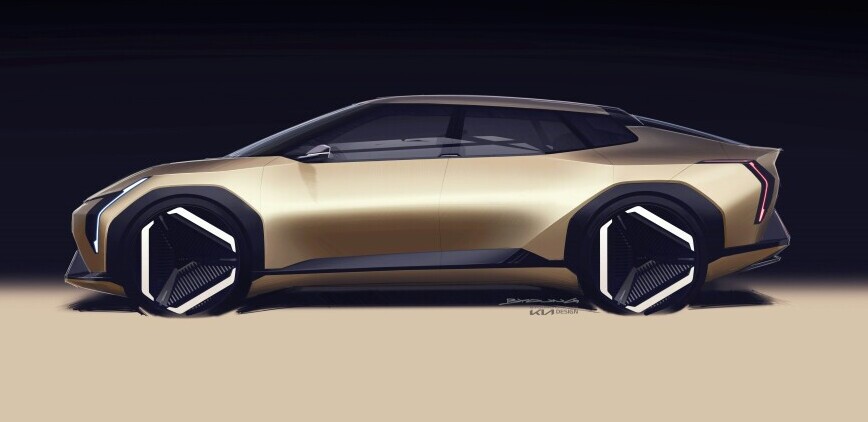Debunking Common Myths About Electric Vehicle Performance
Modern EVs sport some pretty impressive range numbers, pushing past the outdated notions of constant charging anxiety. Many models now tout a range that easily covers the daily commute for most folks, and often more than that.
Tech’s been a friend here, with better battery designs, energy-efficient motors, and software upping the ante on how far these cars can roll. That worry about running out of juice — often called range anxiety — is quickly becoming a relic of the past.
A quick glance at real-world performance shows that vehicles like the Tesla Model 3 or the Renault Zoe zip around town and country without breaking a sweat. They’ve taught us that EVs are more than ready for a road trip, assuming there’s a charge station in sight.
And speaking of charge stations, things are looking up there too. With a doubling down on infrastructure, new stations keep popping up all over, making long drives less of a guessing game. Local authorities and private companies are pushing hard to get more chargers in place.
Of course, how you drive has an impact too. If you turn on all the creature comforts and drive like there’s no tomorrow, you’ll see the range drop just like you would in an internal combustion engine. But, if you’re smart about it — keeping speeds reasonable, using regenerative braking, and preconditioning the cabin while still plugged in — you’ll squeeze out every mile.
Shedding Light on EV Performance: Comparing Speeds
Electric vehicles have swiftly moved past the days of being the eco-friendly but sluggish option. Today’s EVs come equipped with advanced engineering that delivers both power and thrill, dispelling the notion that they’re too slow.
The truth is, many EVs boast rapid acceleration thanks to their electric motors, which deliver instant torque. This means that when you hit the accelerator, you feel the kick right away, unlike conventional internal combustion vehicles.
it is quite common now for EVs to accelerate from 0 to 60 mph in under four seconds, some can even do it faster than that! These speeds have catapulted EVs into serious performance conversations.
The inherently low center of gravity in EVs, thanks to the batteries placed along the floor, also contributes to superior handling and stability. This makes them compelling to drive, especially when navigating twisty roads.
Yet, it’s worth noting that EV speed isn’t all about raw numbers. The driving experience — silent operation combined with power — is distinctively different and quite addictive. Sure, they offer quieter rides, but that doesn’t mean losing out on the thrill of speed.
For regular drivers and car enthusiasts alike, the advancement in EV performance standards has brought a new sense of excitement. Electric cars are here to show they can be fun, fast, and capable of competing head-to-head with traditional vehicles every step of the way.
Charging the Future: Addressing EV Charger Availability
The landscape for EV drivers is becoming more charge-friendly with each passing day. Long gone are the times when finding a charging station felt like a scavenger hunt. These days, charging stations are expanding, popping up in both urban centers and quieter areas.
So, what’s driving this boom in charge points? It’s a mix of investments by both public sector projects and savvy private companies that see the future is electric. Many governments worldwide are setting ambitious targets for expanding charging networks, helping make EVs more accessible to everyone.
The availability isn’t just about the number of chargers either. The variety, from fast to ultra-fast, means recharging can fit into your routine — whether that’s a quick top-up at the grocery store or a fuller charge while grabbing lunch.
And don’t forget about the apps. Charging networks offer smart solutions that keep track of charger locations, availability, and pricing. Handy platforms like PlugShare or Zap-Map make planning longer trips a breeze by showing available stations along your route.
Worried about waiting in line? With the steady rise in chargers, bottleneck fears are easing. Rest assured, as more EVs hit the road, infrastructure is keeping pace, paving the way for seamless electric journeys.

EV Battery Evolution: Dispelling Misconceptions About Lifespan
The evolution of battery tech is nothing short of revolutionary, tackling many misconceptions about how long EV batteries last. Many believe EV batteries wear out quickly, but advancements show a different reality.
Modern electric vehicles feature batteries designed for longevity, often backed by manufacturer warranties that extend up to eight years or 100,000 miles, offering peace of mind. Brands like Nissan, Stellantis, and Hyundai push continuous improvements, making more robust and efficient batteries.
Factors affecting battery health include driving patterns, climate, and charging habits. Just like how we preserve our smartphone batteries, leading a ‘gentler’ life on charge and discharge cycles can greatly aid EV battery longevity.
What’s more, when a battery reaches the end of its prime for vehicle use, it doesn’t mean it’s a paperweight. These batteries can find second lives in energy storage solutions, contributing to a more sustainable cycle. Recycling is also stepping up, with facilities reclaiming precious minerals for new battery creation.
Looking ahead, innovations in battery technology like solid-state batteries promise lighter, safer, and more long-lasting options, making electric vehicles even more attractive for the future.
Powering Progress: The Truth About EVs and the Power Grid
Concerns about the power grid’s ability to support the rising number of electric vehicles are pretty common. But looking closely, you’ll see that this isn’t the looming crisis some make it out to be. The grid has been adapting and evolving to keep up with increased demand.
First, consider how utilities and grid operators are preparing for the inevitable rise in EVs. Many have adopted smart grid technologies, enhancing grid responsiveness and efficiency to comfortably manage electricity distribution.
Moreover, there’s a growing collaboration between energy providers and automotive companies. By working together, they’re ensuring that EVs charge efficiently, often during off-peak hours when energy demand is lower. This way, everyone’s keeping the lights and motors running smoothly.
Governments are on the ball too, laying down policies that bolster grid improvements and support renewable energy sources. By leveraging wind, solar, and other renewable options, they aim to offset the increased electricity demand from EVs, pushing for cleaner and greener energy solutions.
Cities worldwide are already proving this scalable approach works. Take Norway, where a large percentage of the cars on the road are electric. They’ve shown the way with smart planning and renewable energy integration, demonstrating that a smooth transition is not just feasible but happening now.
EV adoption and power grid concerns don’t spell disaster. Instead, they herald a transformational shift toward a more energy-efficient and sustainable world.



4 comments